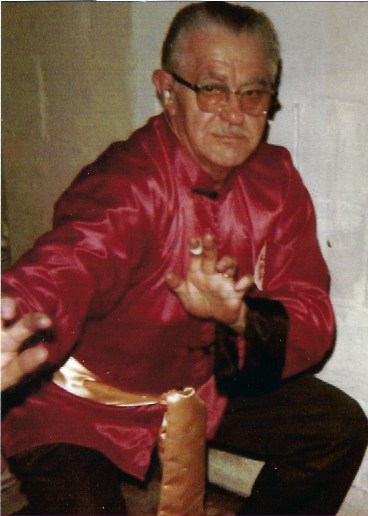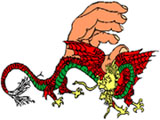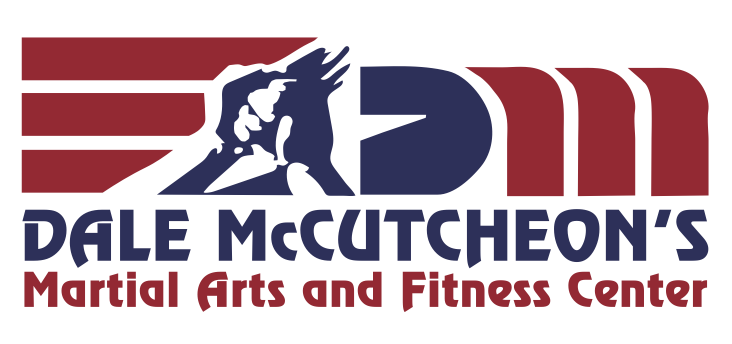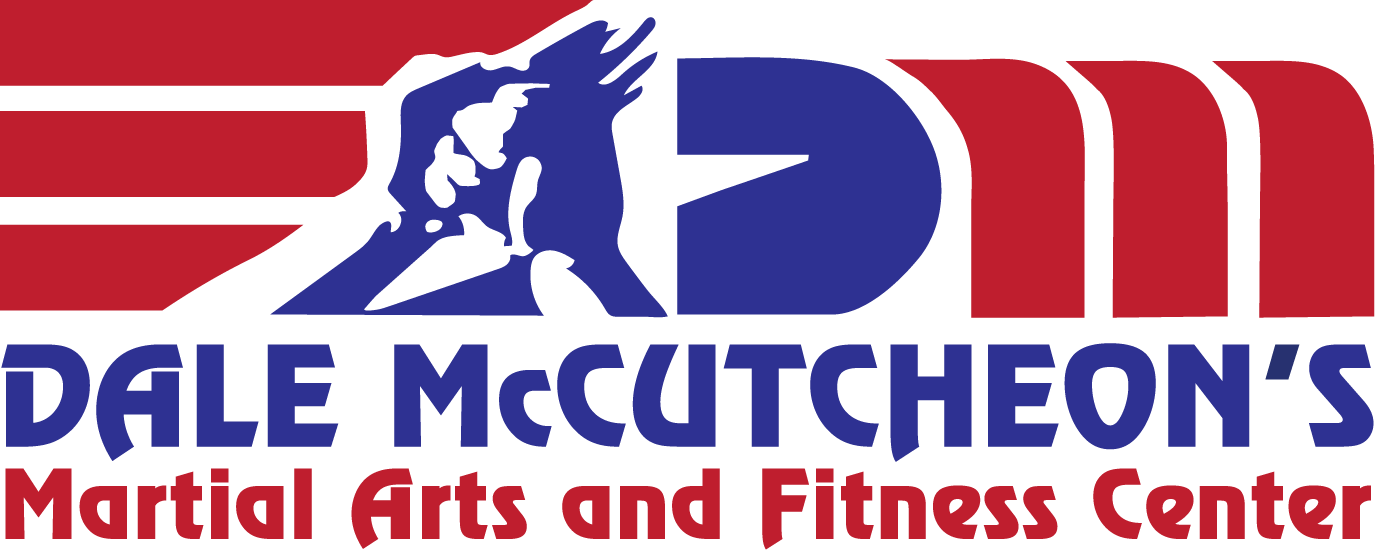Our School History
This is written with the intention of accurately documenting the history of the Dale McCutcheon’s American Karate System.
In order to know where we are going as a school and a martial art system, it is important to understand where we came from. Our system began with a Master Yee Chong. He was a very talented martial artist and served as Master Andrew Tamper's first inspiration and instructor. Master Andrew Tamper, Dale McCutcheon’s instructor, continued his pursuit of growth and knowledge which led him to establishing the Yee Chong Mu Gow system, rightfully named after his first teacher. Master Dale McCutcheon studied under Master Tamper for many years, and eventually, he established Dale McCutcheon's American Karate System.
Our story begins in Alliance, Ohio in the early 1900’s. A man came from China to be employed by the Alliance Railroad Company, in hopes of making a living for himself. His name was Yee Chong, also known as Yee Wah, and by 1911, he owned a laundromat on South Seneca Avenue in Alliance, Ohio. Yee Chong had been taught many martial arts, including forms of Kung Fu and other internal arts.
Master Tamper's first substantial memory of Master Yee Chong was when ten-year-old Tamper went to pick up his father's clothes from Yee Chong's laundromat. Tamper observed Yee Chong making unique movements with his arms and legs, similar to that of a dance. Interested in these unusual motions of the master, Tamper asked if he was dancing. The master replied, “I don’t dance.” At that time, it was frowned upon for Chinese Masters to teach their martial arts forms to people outside of family members, let alone people who were not Chinese. Therefore, Yee Chong turned down Tamper's request to be taught, and remained steadfast in his decision for the next three years.
On May 23, 1927, after years of being asked, Yee Chong decided to allow Tamper an opportunity to learn. The 13-year-old was led into the back room to be taught his very first lesson. There was a small Chinese boy, about 12 inches shorter than himself, who outstretched his arm to shake hands with him. In a blink of an eye, Tamper found himself across the room with his back on the ground, and his feet resting against the wall. Master Yee Chong then spoke up: "Let that be a lesson to you," he said. "Trust no one."
His initial lesson did not shake this determined young man. Even as he spoke of the occasion years later, Tamper stated, "I still don't know how he did that!" For the next fourteen and a half years, Tamper continued training under Yee Chong, absorbing the knowledge he was offered like a sponge. It is said that he was taught many external fighting arts which included the manipulation of direct striking of pressure points, acupuncture points, and nerve centers. It is also believed he was taught the internal healing arts from Yee Chong as well.
Because of family martial arts secrecy, Tamper was never given the names of the arts he practiced. He continued his studies until 1941, during the Second Sino-Japanese War. It is thought that Yee Chong returned to his family in China, and unfortunately was never heard from again. Andrew Tamper did not stop training and practicing. Yee Chong taught him the value of the martial arts during their time together, and that inspiration carried him through his entire life.

On October 15, 1940, Master Tamper, at 27 years old, enlisted in the army to serve the United States in its fight in WWII, serving in the Pacific Theatre of Operations. While stationed in the South Pacific, Tamper faced diseases like jungle rot and malaria so intense that doctors did not expect him to survive. He was given three diagnoses that are recorded to this day: pompholyx, colitis, and yet others labeled infectious and parasitic diseases. Many of the lessons he learned over the years, primarily with Yee Chong, are accredited for his survival both mentally and physically.
While serving overseas for three years and one month, Tamper sought out other martial arts styles and systems to have a well versed understanding of martial arts as a whole. Through the military itself, Tamper learned Judo and continued that practice after returning home. He earned a third dan black belt in the system from the United States Judo Association (USJA). While overseas, he also learned the art of Karate, taught by a surplus of practitioners and teachers in the South Pacific and Asia. Other achievements consisted of earning a Shodan in Hakko Ryu Jujitsu and Dan rankings in Shito Ryu Karate, Shotokan Karate, and others as well.
During his time in the armed forces, Tamper was instructed to teach hand-to-hand combat training, knife fighting, and bayonet training. As he continued to learn, he realized many of the new techniques he learned complemented the traditional Chinese techniques taught to him by Yee Chong. Though he held the original teachings of Yee Chong in high esteem, he realized there were many paths to accomplish the same goals. This was his focal point when developing the Yee Chong Mu Gow System.
Tamper was released from the Army on October 6, 1945. Upon returning from his world travels in the US Military, Tamper worked for the City of Canton Postal Services during the day. In the evenings, he taught a mixture of Judo, Karate, and the Chinese fighting arts downtown at the local Canton, Ohio YMCA. In addition to teaching, Tamper sought more knowledge; notably training in Judo and Jiu-Jitsu from local Instructor Sensei Amato.

In 1968, Tamper reached out to the Chinese Information Service, an agency of the Republic of China. He sought approval to promote and establish an organization to help spread awareness in teaching Chinese Martial Arts in the United States. After receiving the go-ahead, he established Yee Chong Mu Gow to help those in the States appreciate martial arts as a whole, with special focus on the arts with Chinese origins.
Years before Yee Chong Mu Gow was even established, Dale McCutcheon was born on November 29, 1953. As he grew older and attended school in the Marlington school district, he fell victim to bullying due to his smaller size and stature. Around 1966 at age 13, McCutcheon sought out help in the only way he knew: revenge. Little did he know that martial arts would change the course of his entire life and help him understand that revenge wasn't the best way to handle a bully.
McCutcheon first attended martial arts classes in a local school under Bill VanCamp, a student of Master Tamper. VanCamp introduced Master Tamper to McCutcheon, and the rest is history. McCutcheon was so intrigued by Master Tamper’s virtue and skill that he started learning under him at the Canton YMCA.
One story tells of Master Tamper’s strict and difficult training methods, with McCutcheon as the example. One day during the classes at the YMCA, Master Tamper attempted to show the students how to stretch their toes properly, so as to be able to pull them back in a front snap kick to prevent them from breaking. As they were stretching, Master Tamper walked up to McCutcheon and sat on his shoulders. This demonstration served as a memory of mind over matter, and the importance of dedication within the arts. Though this method is no longer used at our school, the story still strikes the hearts of the participating students.
When McCutcheon was a green belt, he started teaching classes and gaining experience. This is where he first discovered his love of sharing the martial arts with others. He continued to teach and train under Master Tamper for many years, gaining experience and knowledge as he trained. Around 1971, at the age of 18, McCutcheon tested for his black belt under Master Tamper. Recalling the experience, McCutcheon stated, “I was so ready to test. There wasn’t anything I wouldn’t have done to accomplish that goal.”
Years later, McCutcheon was given the opportunity to move to Nebraska for a year. He was hired by Bear Enterprises to work with hunting equipment, bows, reloaders, and other gear. While out West, he continued teaching his friends and students, as well as searching out other martial arts schools to continue his personal development. Though he wasn’t learning directly from Master Tamper, that didn’t stop his pursuit of knowledge and growth.
When he returned, McCutcheon decided it was time to start his own school. He spent many hours with Master Tamper developing the katas and forms, self-defense, and material you see today in the Dale McCutcheon’s American Karate System. Master Tamper was known to invite masters in different systems to train at the YMCA in their classes, with the furthest being a master from China. One master of note was Master Ping, who flew out from China. He is said to have had a heavy influence on Mr. McCutcheon when training him in the way of the mantis animal style. To this day, you can see hints of the mantis system in open hand forms and weapons katas, developed by McCutcheon and Tamper.
McCutcheon pursued other Black Belts within the local community to work and develop the most effective street-ready self-defense. He selected techniques that worked with all body types, including those with a smaller stature like himself, and included them in the system he was developing. He found that his techniques had to be sharper and more developed than others since he couldn't rely on out-muscling larger opponents.
In 1977, after collecting cans to exchange them for money for equipment, McCutcheon opened his first school in Hartville, Ohio and called it Hsiao Tao Academy. It was a martial artist's dream, having high ceilings for weapons training, large open mats, and many pieces of advanced training machinery and equipment. For many years, the school ran effectively and smoothly within the community. He took the same tradition that Master Tamper used in his classes and included it when teaching his own. Chinese terms were used to bow, line up, and all forms had Chinese names to fit within the culture of the system's origins.

McCutcheon's journey was not without its challenges. He faced a good deal of anti-Asian prejudice. Not understanding the cultural significance of the Chinese terms and symbols, parents of students would complain to the staff that the terms were evil and the symbols un-American. Paranoid and closed-minded individuals demanded change. For the continued success of the school, in June of 1985, the name of the school was changed from "Hsiao Tao Academy" to "Dale McCutcheon’s Martial Arts and Fitness Center." With that change, unfortunately the school lost an epic dragon logo and many of the Chinese names of our weapons katas.
McCutcheon continued to train himself, but he also went on to produce many black belts. The Stars and Streaks Tournament Team would travel all over the United States to compete. They became so successful that they started to travel internationally, resulting in many World Championships.
In the year 2000, the school's landlord kicked him out of his school. The landlord got an offer from Corporate America he couldn't pass up. In an effort to continue the legacy of the school, McCutcheon moved to our current location on Edison Street NW in Uniontown, Ohio. The land of the old school was leveled, and a CVS Pharmacy was erected in its place.
Our school has not only survived at its current location, but thrived. The lessons Master Tamper instilled in McCutcheon helped him to stay strong during many trying times. When a tornado nearly destroyed our school in 2006, McCutcheon not only rebuilt, but expanded with a second floor; allowing twice as many students to attend. Our school has continued its success since then, having produced many black belts at the new location as well.
On March 9, 2009, the world lost an influential and inspiring man. Master Andrew P. Tamper passed away at the age of 89. His passing resulted in Tamper’s top students inheriting different parts of the system. Mr. McCutcheon inherited the arts of Hsiao Tao and Do Vee Fut, continuing the legacy with new leadership at it's helm. Master McCutcheon has committed his life to reaching out to those near and far, striving to build better leaders within the community and the world; the vehicle he uses is the martial arts.
Yee Chong → Andrew P Tamper → Dale R McCutcheon
Yee Chong Mu Gow is made of three primary arts:
- Ku Tai Tae includes the original systems taught to Tamper by Yee Chong, including the internal arts of Kung Fu and Chi Kung. This translates to the way of the ancients, referring to Yee Chong’s influence.
- Chinese Kenpo is a brutal art Master Tamper learned. It has been adapted for modern times and competitions. Many of the techniques are to break, disable, or cripple the attacker. This system includes forms, sparring, and many weapons.
- Mo Ying Dao is an interpretation of the Ku Tai Tae system, reflecting its continual growth and development. Its translation is the formless way; it is based in Ku Tai Te, but developed with other systems added along the way. They are Do Vee Fut, translated to hard style self defense; Fi Sum Dome Fut, translated to quick response or quick reaction self-defense; He Tao, pronounced Wu Dao, meaning the way of the tiger; and finally Wu Qin Wu Shu Gong, which includes the five animal styles and five flow practices. Many other techniques and systems, such as the Japanese systems Master Tamper learned overseas, are included in Mo Ying Dao. The idea behind this system is that it continues to grow and develop as their Masters learn, grow, and exchange knowledge.
Dale McCutcheon’s American Karate System is classified under Yee Chong Mu Gow, as an adaptation of Mo Ying Dao system in Do Vee Fut.
The Dale McCutcheon's American Karate System has still not reached the end of its story. The spirit of those who came before us has led our system to where it is today, and those to come will continue its development and teachings in the same manner Master Yee Chong, Master Andrew Tamper, and now Master Dale McCutcheon have done.
History compiled by Evan Gatte.
